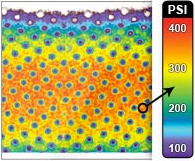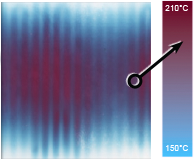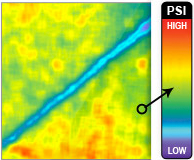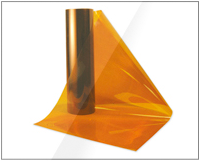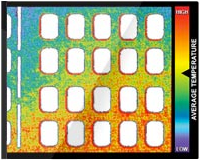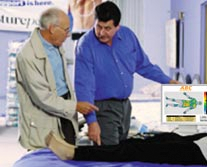Article: ThermalNews.com
Tactilus Sensor System Ensures Optimal Heat Sink Efficiency
The new Tactilus heat-sink analysis system by Sensor Products, Inc. enables research and design engineers to precisely test and correct the surface contact and pressure distribution between the heat sink and its source. Even a slight warping of the heat exchange structure or reduction in surface contact area can have an effect on cooling efficacy. If the pressure distribution is not uniform, heat conduction will be low, and the electronics may overheat.

With Tactilus, engineers can visualize actual contact forces and pressure distribution data on the circuit board components. As the mounting screws between the CPU and the heat sink are torqued, Tactilus maps and measures the changing pressure distribution between the mating surfaces and displays it through its software. The heat sink interface can be tested, manipulated and repositioned in real-time, speeding the trial and error process and eliminating the need for additional assembly. Tactilus also provides the pressure data needed for FEA simulation predictions.
Unlike conventional transducers, the Tactilus sensor is flexible and only 0.015-in. thick (0.38 mm), allowing it to be placed between the CPU and heat sink without affecting the assembly. The sensor pad has 625 resistive sensing points arrayed on a 25 by 25 grid. The total sensing area is 2 inches by 2 inches. The scan speed is up to 1,000 Hz, and the operating pressure range is 0 to 100 psi (0 to 7 kg/cm2).
The Tactilus sensor system will endure hundreds of diagnostic uses on different heat sinks with consistent repeatability. It is highly resistant to electromagnetic noise, temperature, and humidity fluctuations. Accuracy is ± 10 percent, repeatability is ± 2 percent, hysteresis is ± 5 percent and non-linearity is ± 1.5 percent.




